Orchids are one of the more common collectible species of hydroponic garden plants with beautiful flowers.
Growing orchids without soil and in water, or orchid hydroponics, is a new phenomenon for most orchid collectors, which is referred to as water culture. This method is rather easy to master, and any beginner can use it.
- Related article: What Kind of Plants Can You Grow With Hydroponics?
We’ll discuss all that there is to know about growing orchids hydroponically and some common problems associated with growing orchids in water.
Can Orchids Grow in Water?
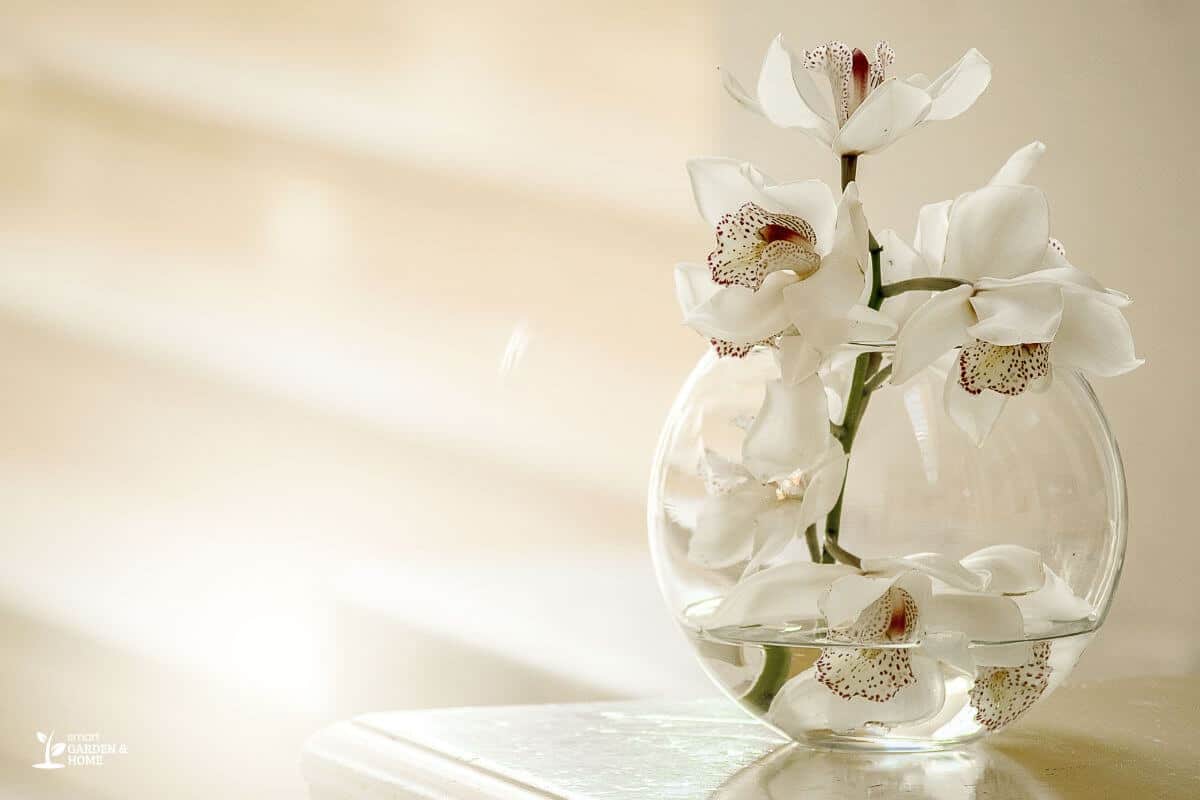
You may be wondering, can orchids grow in water? The simple answer to this question is yes, growing orchids in water works.
Orchids require soil during germination, but as they develop, they can transition from soil to water hydroponic systems with less soil needed.
Epiphytic orchids grow on tree bark or on the ground in their natural habitat.
These plants have the ability to grow in minimal soil and derive their nutrients primarily from the air.
Orchids are known to be challenging to grow due to their method of absorbing nutrients and water from the air, indicating their adaptability to high humidity environments.
Certain terrestrial orchid species have adapted to thrive in soil-based environments.
While many orchid species can thrive in water, some varieties cannot survive complete submersion.
Choosing the appropriate type of orchids is crucial if you intend to cultivate them in water.
Growing Orchids in Water vs Soil
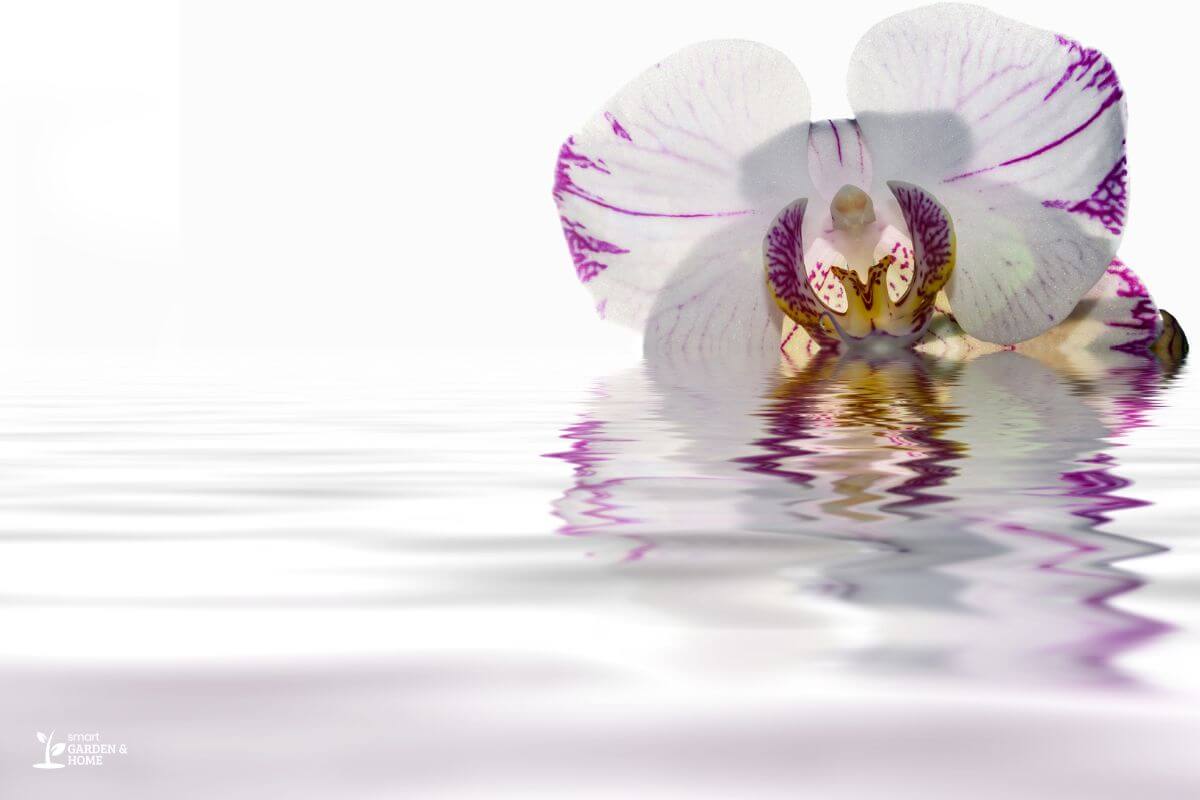
As a common rule, growers will generally tell you that orchids shouldn’t be grown in water as it will cause root rot.
Soilless techniques, like hydroponics, aeroponics, and hydroculture, are considered some of the best ways to grow orchids.
A common issue with cultivating orchids in soil is root decay or the dead root systems.
Using a water culture system to grow orchids provides the benefit of clear visibility of the plant’s roots, enabling prompt identification and resolution of any issues.
Most plants are prone to attack from pests, and these pests will inhabit the foliage of plants or the surrounding soil.
Plants grown in water culture tend to have fewer pests, are less prone to attacks, and have a lower chance for bacteria.
One of the drawbacks of utilizing a hydroponic system for orchid cultivation is its potential to be a time-consuming process.
It may take up to a year for an orchid to fully adjust to a water culture system and begin growing successfully.
The root tips of an orchid plant are tender and should be anchored to the bark of a tree or in soil. Orchids are fragile plants and don’t do well if they are constantly being moved around.
Growing orchids in a water culture system require them to be removed from a container with water whilst it adjusts to the system, making it vulnerable to an entire root damage.
Equipment Needed to Grow Orchids in Water
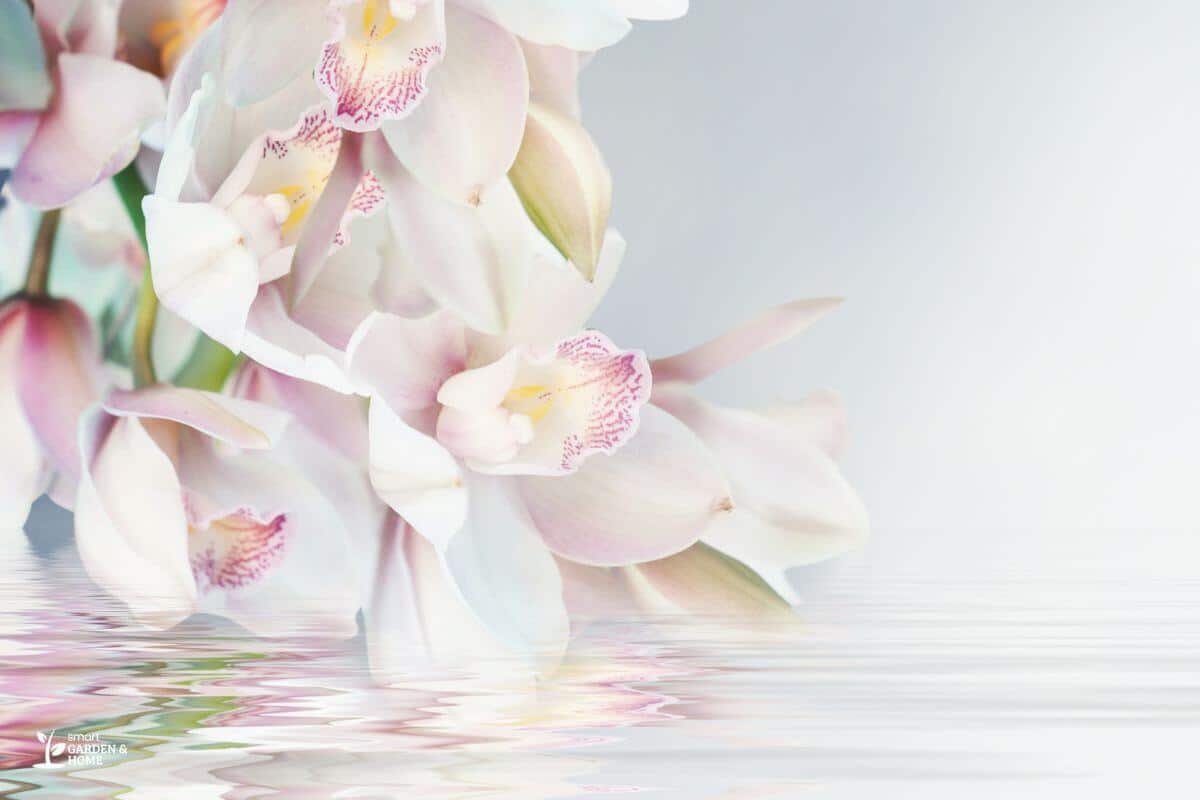
Orchids are quite capable of growing in water as long as they’re given the care they need.
Your orchid deserves the best! Equip yourself with the essentials to ensure its proper care.
Below is a list of essential equipment required for hydroponic orchid cultivation:
- Container – Select a container of suitable size to accommodate the roots of your plant while allowing for some extra growth space.
- Trimming scissors – Find a sharp pair of gardening scissors as you will need them to trim the roots of your orchid.
- EC meter – Measuring the correct levels of nutrients to feed your plant can be done with the assistance of an EC meter.
How to Grow Hydroponic Orchids
1. Choose the Orchid Variety to Grow
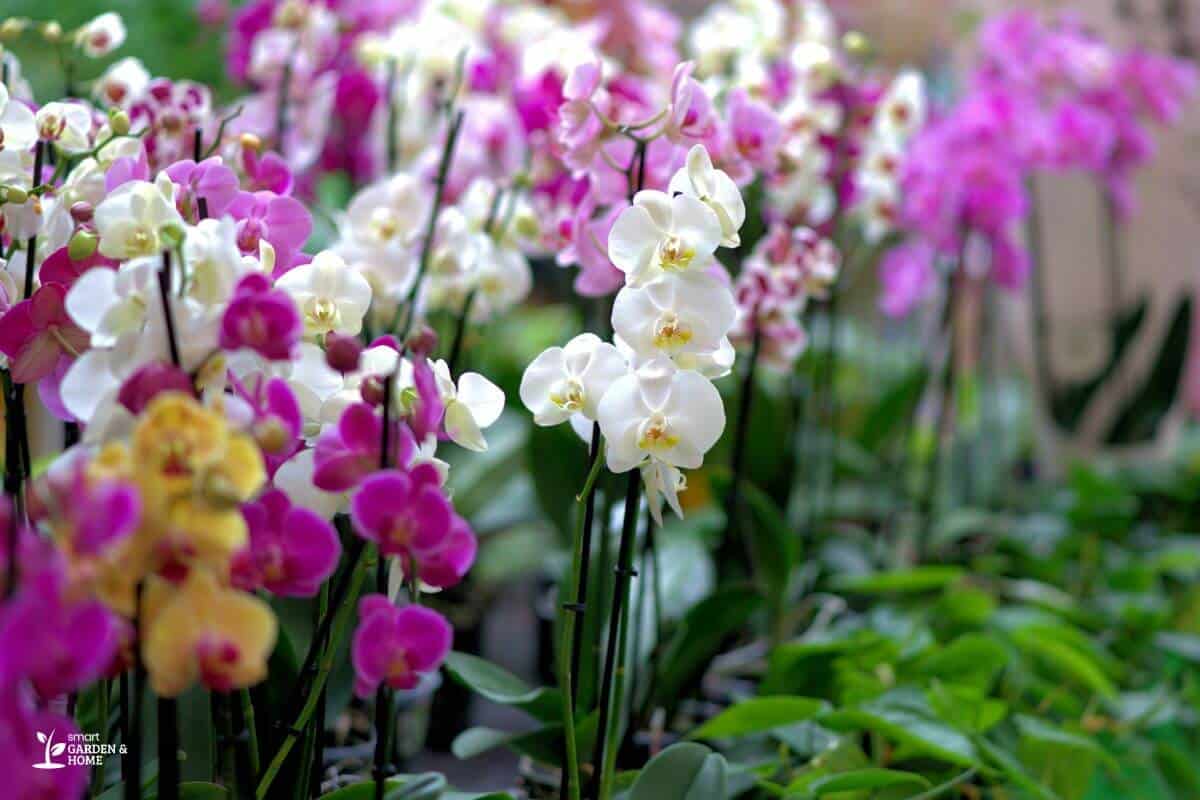
There are over 28,000 known species of orchid with gorgeous flowers, of which they can be classified into 850 different geniuses.
Most species of orchids can be grown in water. However, the terrestrial species will find it harder to adapt.
Phalaenopsis orchids are one of the most common species grown in water. This species is successfully grown in water culture systems around the world.
2. Choose the Hydroponic Technique
Orchids can be grown in different types of hydroponic systems, but the most common technique used is water culture methods.
There are three (3) different techniques in hydroponics:
Full Water Culture Hydroponics
The full water culture system keeps the orchid roots submerged in water for 5 days at a time, then allowed for dry periods of 2 days.
A quarter of the orchid’s roots are submerged, and as the water levels dissipate, more water is added to the system.
Once the orchid has adjusted to this system, it requires minimal maintenance.
Semi-Water Culture Hydroponics
This water culture technique alternates between cycles of dry and wet days.
Orchids are grown in water for periods of 2-3 days, then allowed for dry periods of 4-5 days.
This cycle can be varied until you find out how many dry and wet days your orchid needs.
Semi-Hydroponic Hydroponics
The semi-hydroponic system is different from the two aforementioned methods.
This system uses Clay Pellets to support the stem and roots of the plant.
Air holes are drilled on the sides of the growing container above the water line. This creates an airflow for the plant’s roots.
3. Light and Temperature Conditions for Orchids
Orchids are sensitive to direct sunlight, and exposing them to periods of direct sunlight will lead to their leaves burning.
In their natural environment, orchids grow under the canopies of trees and are exposed to bright, ambient sunlight.
Naturally from the tropics, orchids do not like cooler temperatures or cold winter months.
Orchids thrive in humid and warm environments, with an optimal temperature range of 65°F-80°F for healthy growth rate.
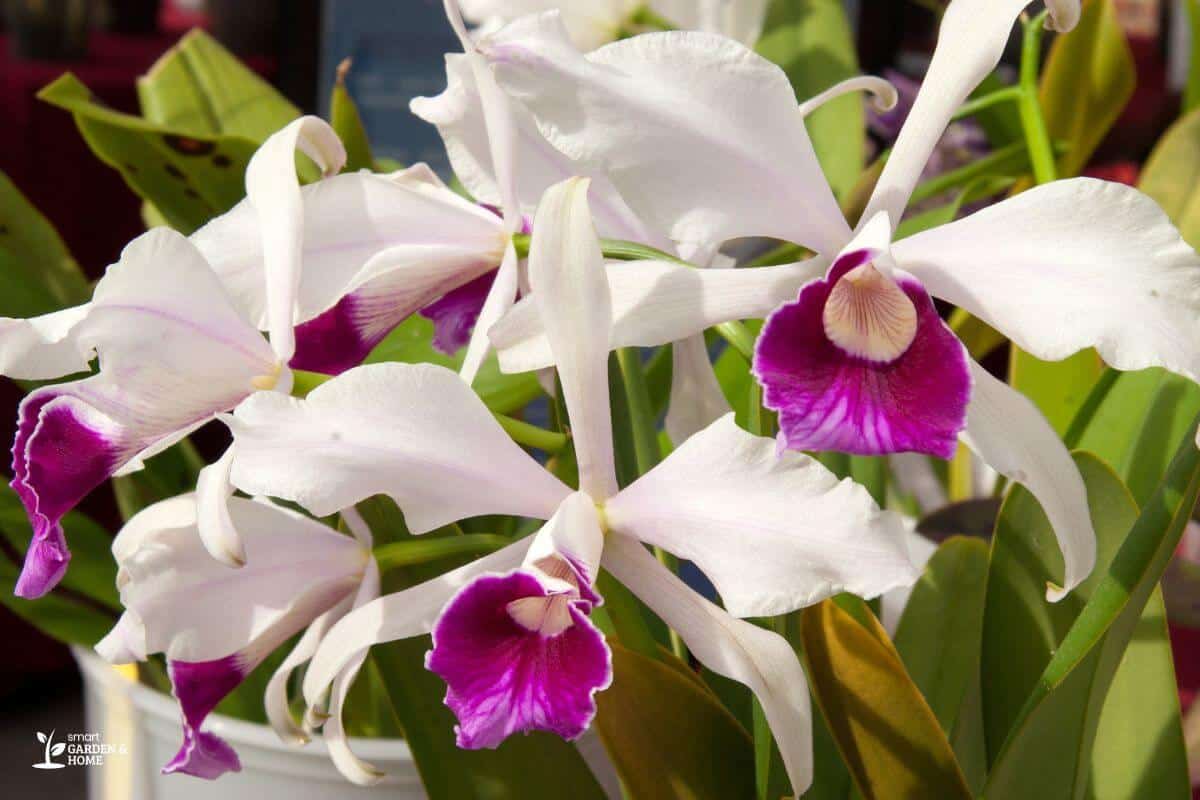
4. Water and pH Levels
For hydroponic orchids, it is necessary to use clean water from a dependable source.
Water, whether if it’s rain or tap water, must undergo testing to ensure its usability. Following testing, pH levels must be adjusted accordingly.
The optimal pH range for hydroponic orchids is between 5.5 and 6.0, as they thrive in acidic water.
5. Growing Medium
A water culture system primarily doesn’t use a growing medium.
However, the semi-hydroponic method of growing orchids uses LECA Clay Pebbles as a support for the aerial roots of orchids.
6. Nutrition Solution
The dark green leaves of an orchid plant suggest a diet rich in nitrates.
The hydroponic system will determine the quantity of nutrients provided to your plants.
In a Full Water Culture system, distilled water will be mixed with a nutrient solution. The orchid is then placed in the nutrient solution for 5 days.
When growing orchids, it is suggested to utilize a high-quality hydroponic nutrient solution that is well-balanced, such as 20-20-20.
If you are unsure, try using a weaker balance nutrient solution. Remember, it’s better to provide fewer nutrients than overfeeding your plants.
7. Pollination
A downside of indoor plant growth is the need for manual pollination.
In some instances, pollen can be dispersed in gardens by the wind or a ventilation system, leading to the pollination of plants.
Unlike some plants, orchids require the assistance of insects for pollination, as they cannot rely on the air to transfer pollen packets.
Pollinating your plants can be done manually by taking the flowers from one orchid and gently rubbing it against another orchid flower.
8. Propagating the Hydroponic Orchid Plants
The best way to propagate orchids is to germinate them from seed.
Before being transferred to water culture systems, orchid seeds must begin growing in soil or a growing medium.
Orchid seeds are a bit of a slowpoke when it comes to sprouting, taking anywhere from a month to three to finally stretch their green thumbs.
Patience is key when it comes to certain species’ germination—some may take a whopping 9 months to sprout!
Troubleshooting Growing Orchids Hydroponically
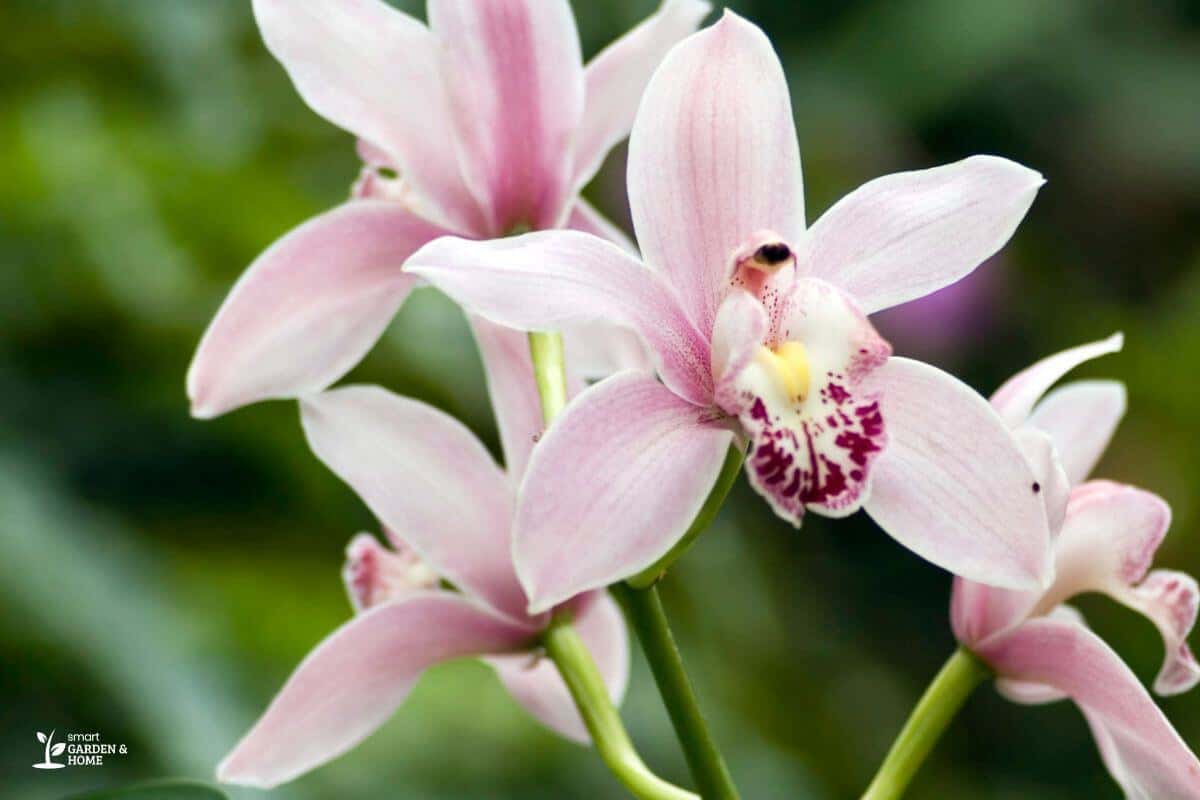
1. Common Orchid Growth Problems
As we all know, growing orchids can become tricky as they are fussy plants and need proper care.
A common growth problem experienced by orchid growers is Bud Blast. This common growth problem causes the orchid to have yellow leaves and shrivel up.
Bud Blast is caused by a drastic change in environment, over-drying a plant, overwatering, or extreme heat. It can be prevented by avoiding any stressful situations for your orchid.
2. Common Pests
One of the advantages of growing orchids in water is the fact that it will eliminate many potential pests.
A soilless growing technique cuts out any crawling or slithering insects. However, flying insects will still be a problem for hydroponic orchid growers.
Whiteflies, thrips, and aphids are considered common pests that can affect the foliage of hydroponic orchids.
To rid your plants of pests, Neem oil and insecticidal soaps can be applied to the foliage.
3. Common Diseases
Growing any plants in water can become a nightmare in terms of waterborne diseases. Submerging the roots of a plant in water can easily cause Root Rot, Black Rot, and Southern Blight.
Root Rot and Black Rot are the main causes of hydroponic orchid plants dying. These diseases are caused by exposure to wet conditions.
Growing plants in the water will, unfortunately, come with its drawbacks.
Avoid Root Rot and Black Rot from setting in by ensuring that your orchid plant has a dry time and removing any potential rotting root tips.
Southern Blight is a disease that causes the yellowing of foliage. This fungal disease is caused by high levels of humidity and poor air ventilation.
Growing plants in the water will naturally create excess humidity levels.
Orchids naturally occur in humid environment, so keep the correct humidity levels by placing your plant near to a dehumidifier.
Final Thoughts on Growing Orchids Hydroponically
Experience the magic of hydroponic orchid cultivation—the innovative technique that produces breathtakingly beautiful and healthy orchids!
Unlock the secrets to exquisite orchid growth and development by harnessing the power of hydroponics and expert techniques—optimal water, nutrient, and oxygen balance for thriving blooms.
Unleash the hidden potential of your orchids with hydroponics—whether you’re a green-thumbed beginner orchid grower or a seasoned pro, it’s the ultimate way to grow your beloved blooms!
Creating a hydroponic orchid garden can lead to healthy plants and more beautiful flowers.
Don’t hold back, invest in your orchid’s growth and watch them flourish like never before!
Check out these amazing articles to learn more about growing orchid hydroponically:

